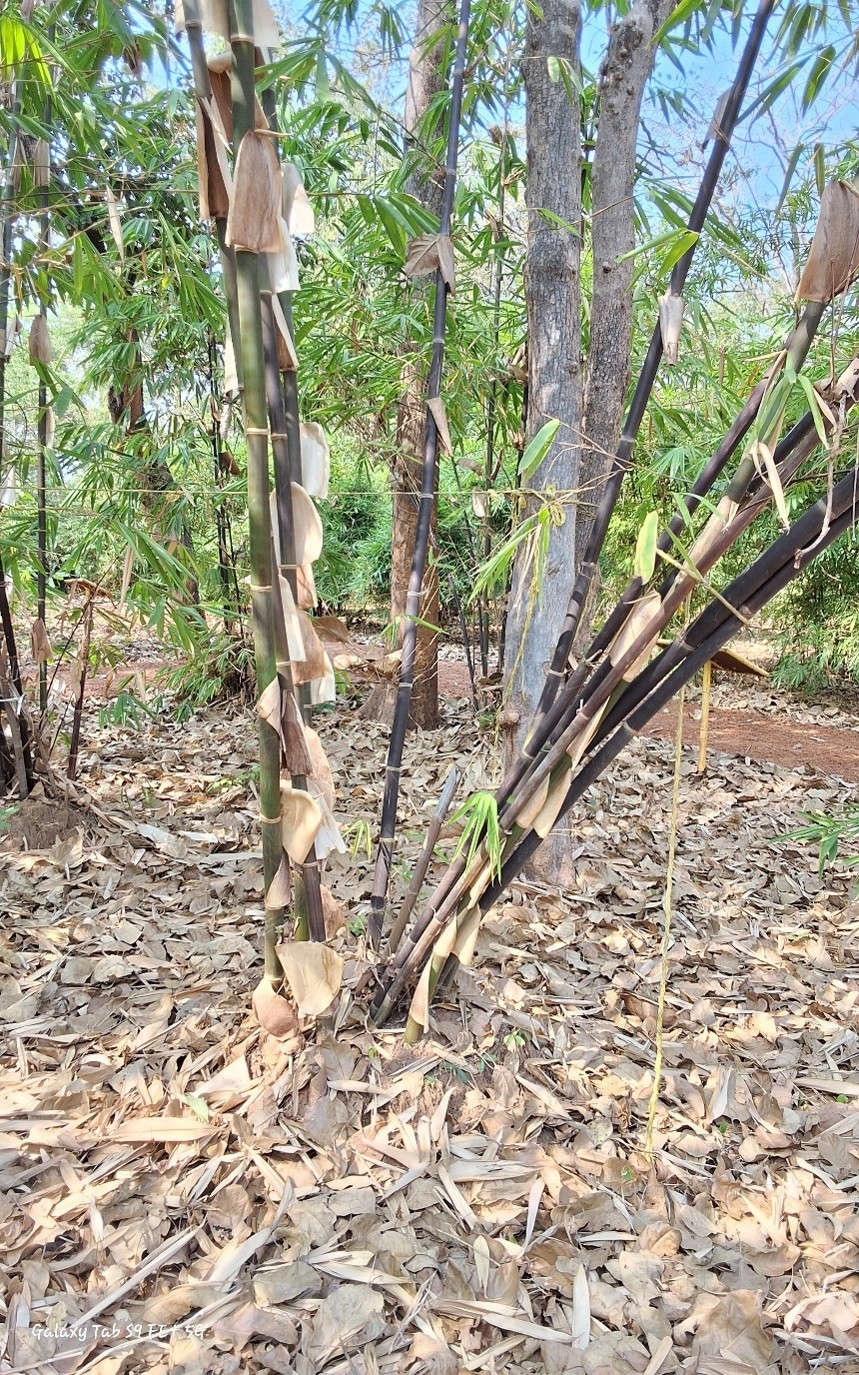Gigantochloa atroviolacea

Gigantochloa atroviolacea
Gigantochloa atroviolacea also known as Violet Bamboo, is a striking and versatile bamboo species native to Southeast Asia, particularly Indonesia. It is typically found in tropical regions at altitudes ranging from 500 to 1,200 meters above sea level. This bamboo thrives in well-drained, fertile, loamy soils with a slightly acidic to neutral pH (5.5 to 7) and prefers moist conditions, though it cannot tolerate waterlogged soils.
The culms of Gigantochloa atroviolacea are dense, erect, and clumping, reaching heights between 10 and 20 meters with a diameter of 5 to 8 cm. The culms start off green but mature to a striking dark purple to violet color. The internodes range from 30 to 50 cm in length, and the culm sheath is green when young, turning dark purple as it matures. The leaf blades are lanceolate, narrow, and pointed, measuring 12 to 20 cm in length and 2 to 4 cm in width, with a smooth, glossy surface.
This bamboo species is well-regarded for its strength and durability, making it highly suitable for construction purposes, such as scaffolding, poles, and structural elements. Its straight and smooth culms are also ideal for furniture making, and its flexible, sturdy nature makes it a popular choice for traditional handicrafts such as baskets, trays, and other woven items. Due to its vibrant purple color, Gigantochloa atroviolacea is often grown as an ornamental bamboo in gardens and landscapes, where it adds a decorative touch.
In addition to its decorative and practical uses, the bamboo's young shoots are edible and are consumed as a vegetable in certain regions of Southeast Asia. Gigantochloa atroviolacea is also sometimes used in pulp and paper production due to the quality of its fibers.
This species has a long flowering cycle, with flowering events occurring every 30 to 60 years. Flowering is rare and typically happens only in older, mature plants or clumps. The inflorescence is a panicle with branching, usually appearing in the upper part of the culm. The flowers are small and inconspicuous, with bracteate glumes and large anthers.
Gigantochloa atroviolacea is mainly propagated through vegetative methods such as culm cuttings, clump division, and tissue culture for commercial and research purposes. It produces few seeds, and therefore, propagation through vegetative means is more common.
In conclusion, Gigantochloa atroviolacea is a highly versatile bamboo species known for its strong, durable wood, striking purple-colored culms, and wide range of uses, from construction and furniture making to ornamental purposes and food. Its ability to thrive in tropical climates and its remarkable appearance make it a valuable resource in both practical and aesthetic applications.
Listen Audio:
Need assistance? BRTC Faculty